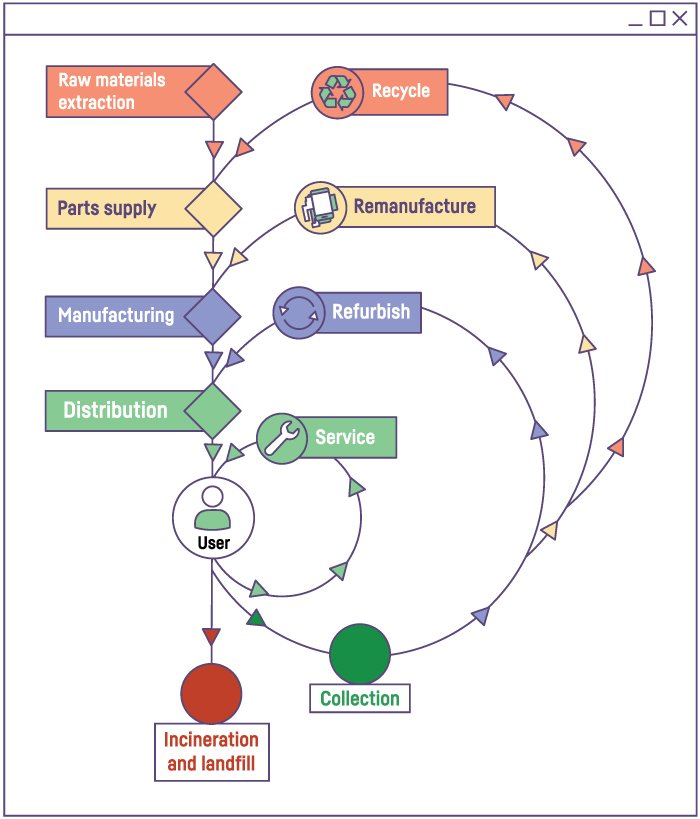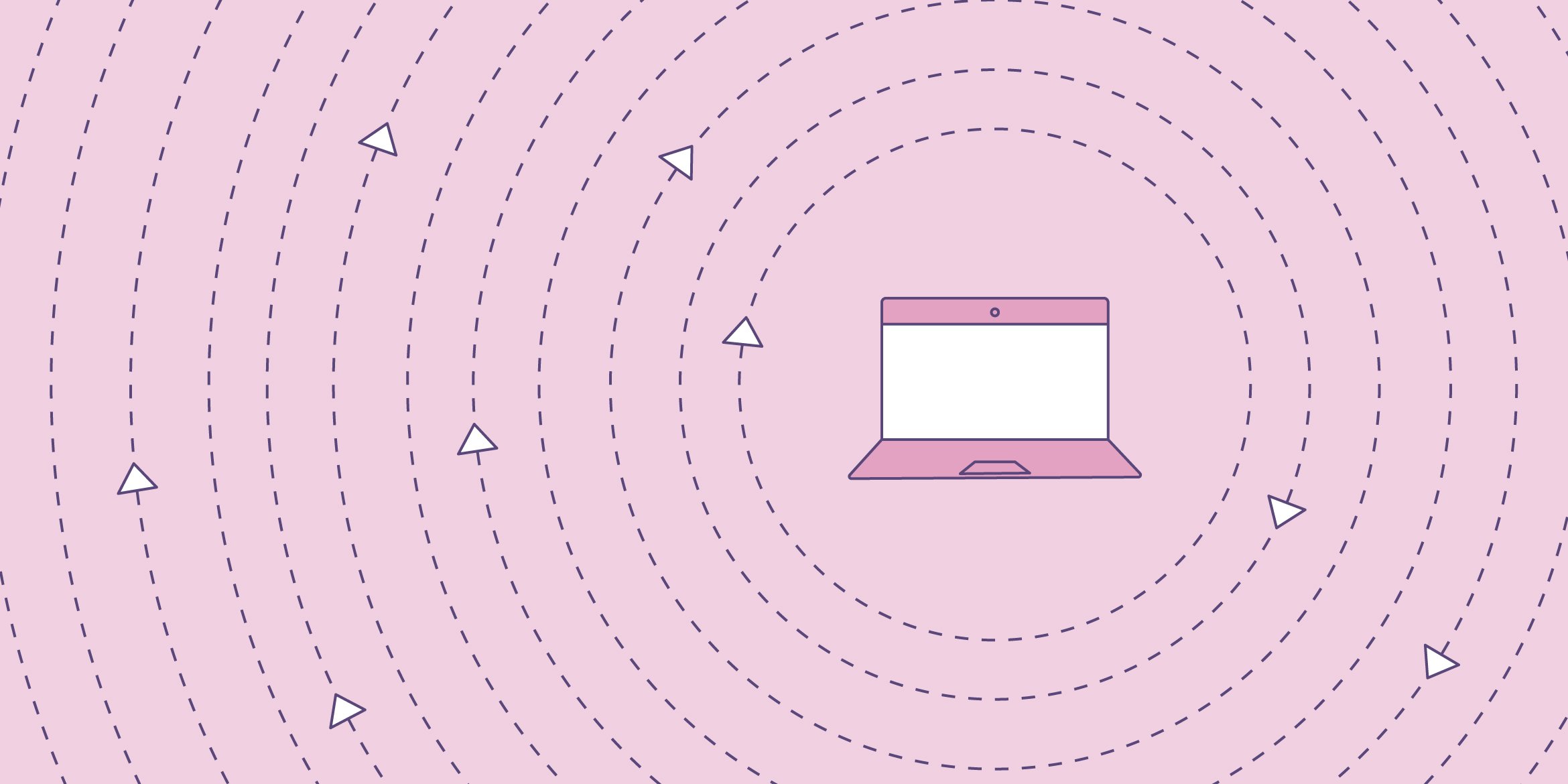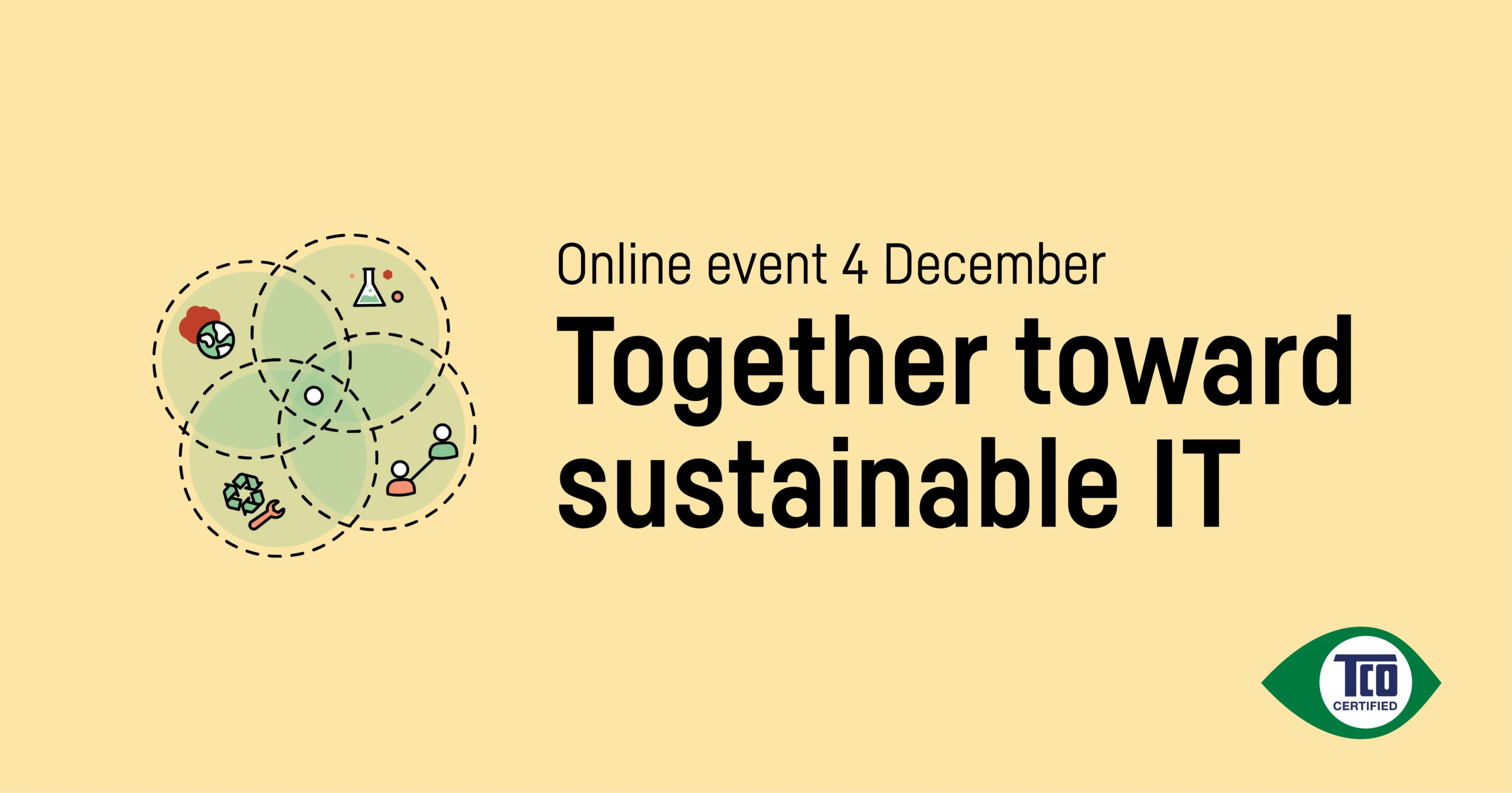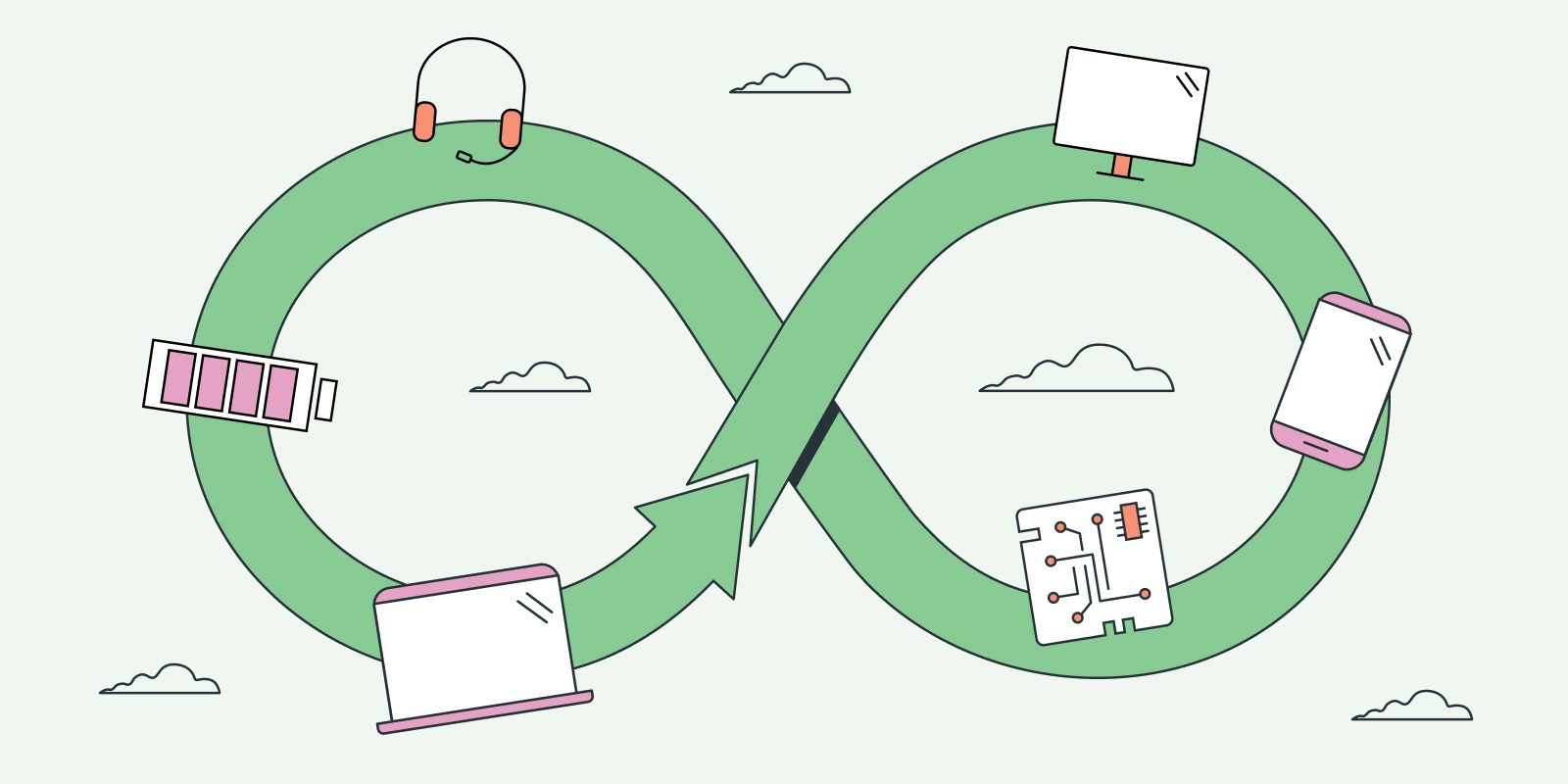By turning natural capital into energy and products, our current, linear way of producing and consuming products has created unprecedented economic growth that has raised millions of people out of poverty. However, it also requires extensive and intense use of natural resources and that is really starting to catch up with us.
We have caused the climate crisis by generating dangerously high levels of greenhouse gas emissions. Fragile ecosystems have been ruined, leading to the loss of biodiversity, soil degradation, polluted oceans and a lack of fresh water. Valuable natural resources are running low. Ultimately, the damage we do to our planet will undermine its ability to provide us with natural capital, and affect our health and well-being as well as our future economic prospects.
Resources are re-used in the circular economy
The circular economy is a way of making ends meet. The logic is simple — it means that we use natural resources responsibly so that we don’t risk exhausting them, reduce greenhouse gas emissions to manageable levels, and protect land and water for the benefit of all in the long term.
IT products are made to have a longer life
When the circular economy is introduced, the linear take, make, use, dispose model, where natural resources are turned into waste, is replaced with a model where products, components and materials are looped back into the system to be used again and again. To enable extended product lifespans and product reuse, IT products are durable and can be upgraded and repaired. Vital components that easily break or lose capacity can be replaced. Products are of high quality and are possible to take apart to allow for refurbishing and remanufacturing solutions. When a product has reached the end of its usable life, materials are seen as valuable resources that are recycled to replace virgin materials in the manufacture of new products. The ultimate aim is to eliminate waste altogether.
Is circularity the same as recycling?
Recycling is an important part of the circular economy — once a product can no longer be used, it is necessary to take care of and repurpose the materials it contains. However, circularity includes so much more — from business models to consumer behaviors and material flows. Most materials decrease in value every time they are recycled, which makes recycling a less favorable solution than repairing and upgrading products.
A model for circularity
In a circular economy, the aim is to keep products and materials in use as long as possible. Products are designed for a long life and are durable, repairable and upgradeable. When products no longer can be used, materials are seen as resources that are reused in new products. The more a product can keep its original shape, the more it will retain its value, which is illustrated by the circles in the diagram below. Circles closer to the user are more resource efficient than circles that are further out.





